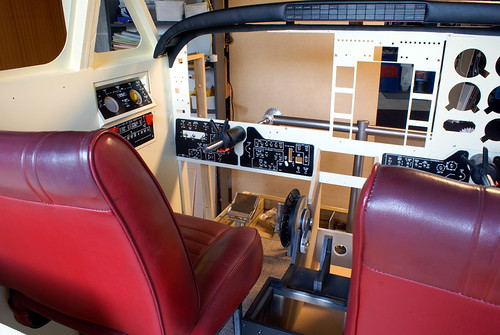It's always a privilege to be able to help someone with their build (and offers us interesting challenges) and one of our more recent custom jobs was to design and manufacture both the Landing Gear Panel and the MIP Annunciator Panel for an Embraer 120 home cockpit.
Below is the photogragh of a real Embraer cockpit that we based our designs on (click for a larger image) ...

And pictured above is the Landing Gear Panel completed and with all of its associated hardware fitted, with the exception of the gear lever itself - the wiring will all be done at the time of installation. Although the panel sizes were pre-determined, the panel itself was constructed with our own 2-position gear lever in mind, as this will eventually be fitted once in the simulator. The lever can actually be attached directly to the rear of the panel, although it wasn't required for us to do so in this instance.

Here we have a couple of the LEDs temporarily hooked up and under test. The entire panel is to be backlit using flood lighting and has been constructed from opal material to accommodate this whilst also trying to maintain some semblance of text clarity when unlit. Different grades of opal (and camera angles!) can give different results - and the reduced contrast of a grey panel and opal text can occasionally cause nightmarish problems.

Here we have the MIP Annunciator Panel, although without any warnings, cautions, or indicators lit, there's not really very much to be seen.

Each annunciator is a separate entity, which means that removal for updating, replacement, re-positioning, or otherwise is easily done. This can be helpful because, as we all know, needs (and software) change and progress over time.
The following photo (somewhat obviously!) shows the annunciators being tested in dark conditions, which most often is the normal environment for a home simulator whilst in operation, and allows us to check for any light bleed. The LEDs shown here (as well as not necessarily reflecting their rightful colours, as we didn't have ready access to the correct colour placements) are incredibly bright.

The brightness of the LEDs is perhaps better illustrated below: under workshop lights and with the camera flash also. The legends are still clear to see if activated.

The above Embraer parts are available on request now, although they won't be making an appearance on our website until the New Year, as I'll be updating the website with various new products and developments over the Christmas Break.





.jpg)







































